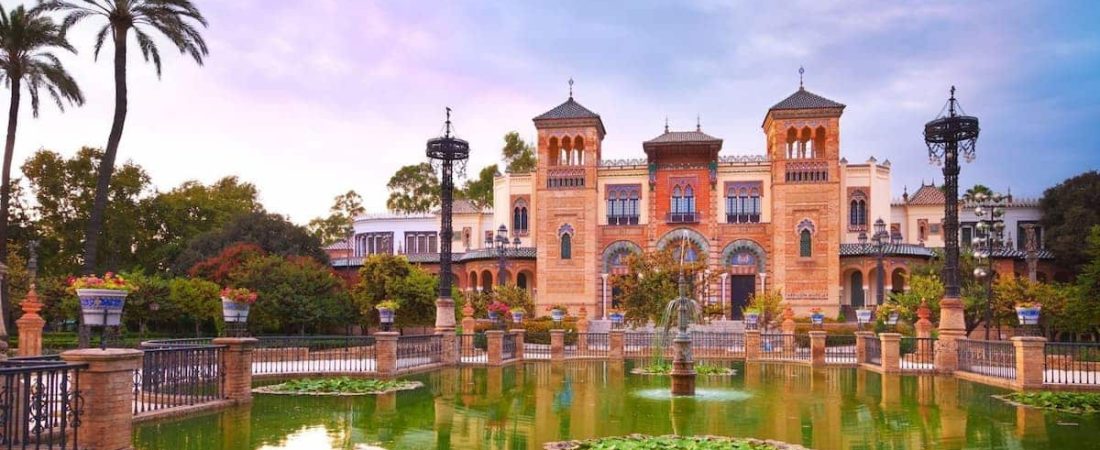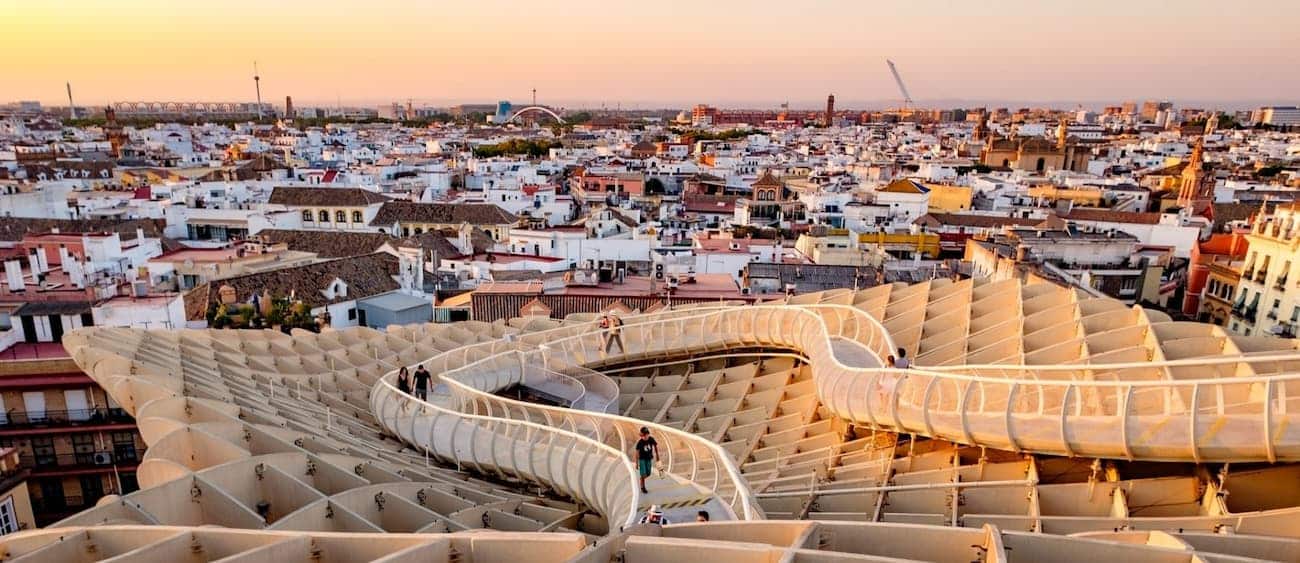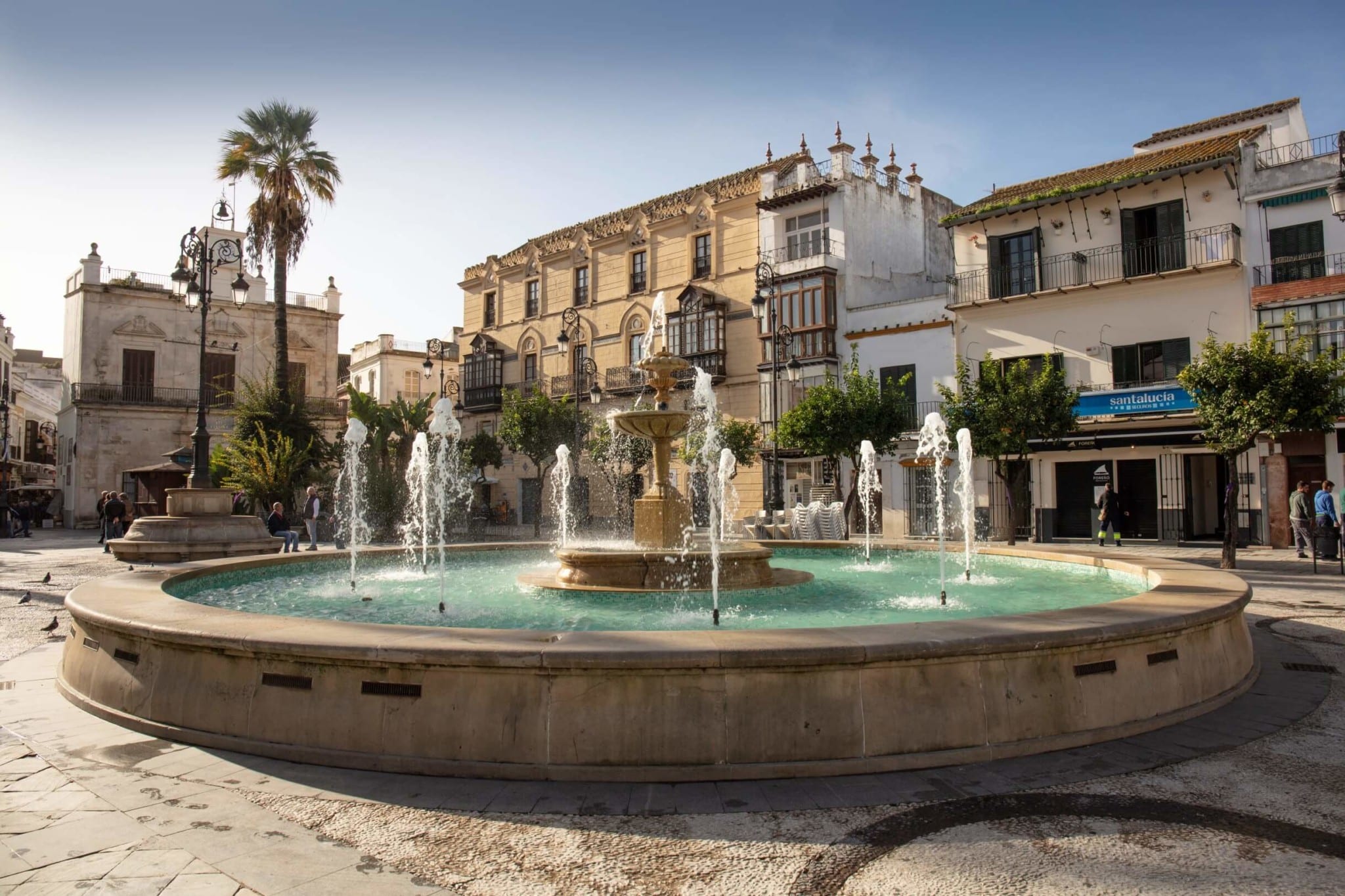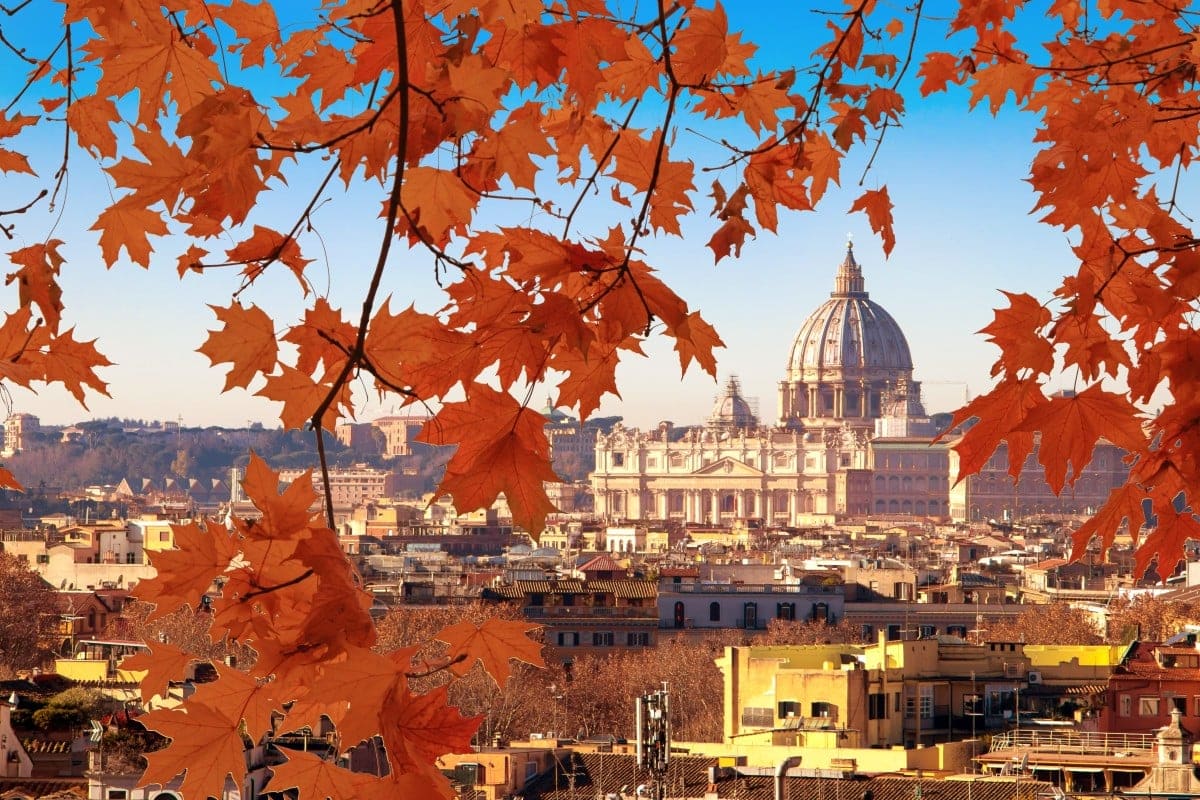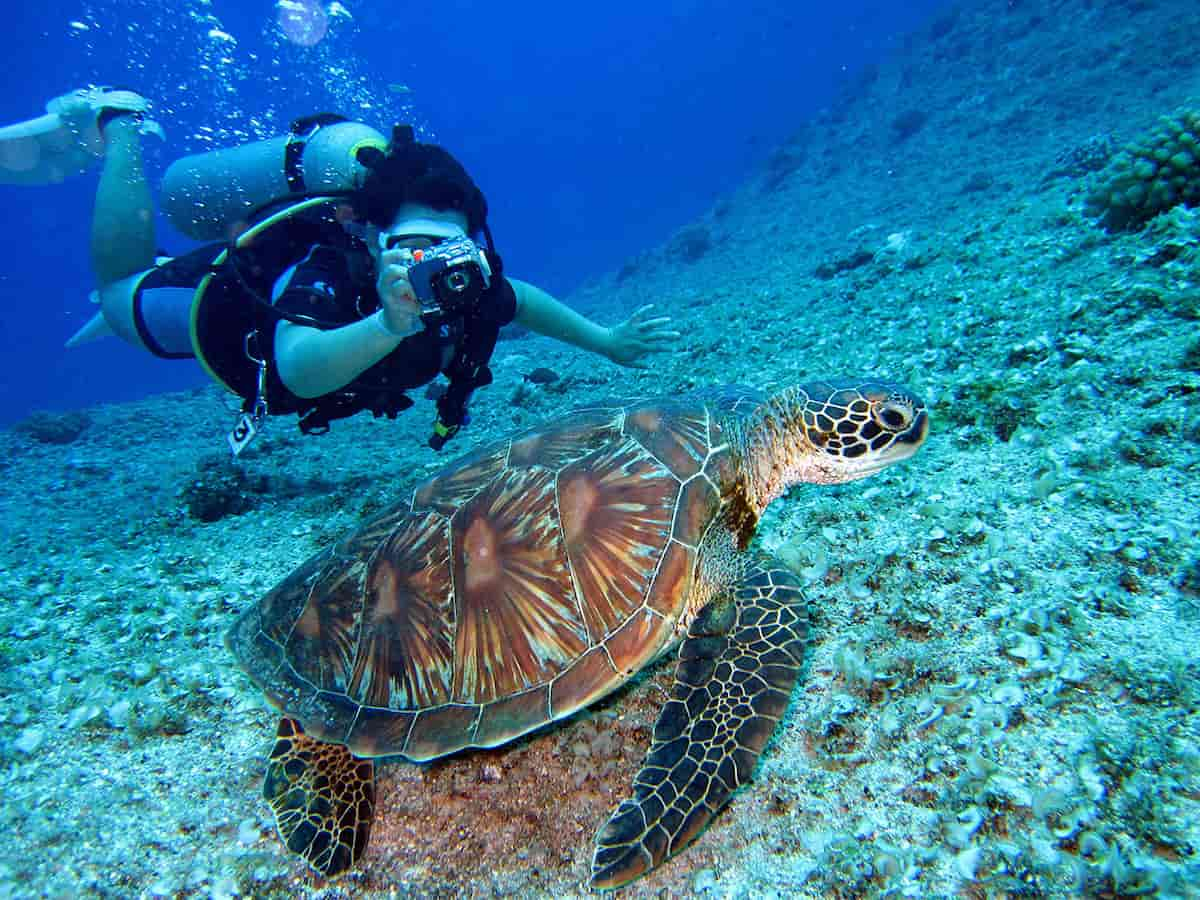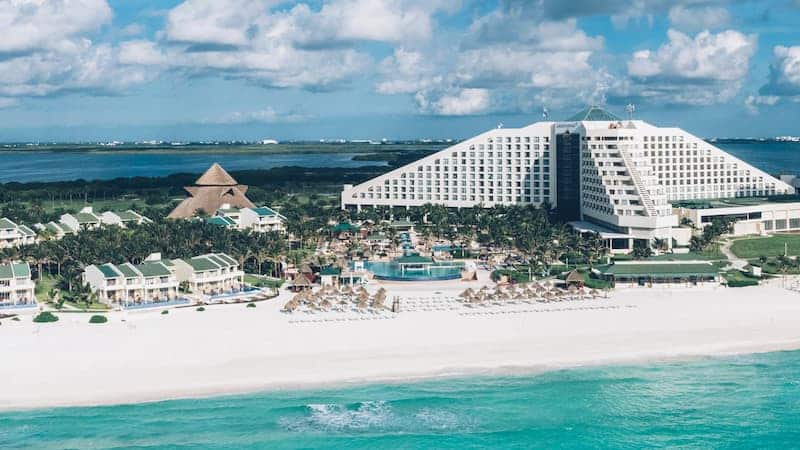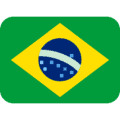The María Luisa Park is one of the most outstanding places in the city of Seville, next to the Real Alcázar or the Plaza de España, the latter located within the same space, to name a few. Its construction stems from a generous donation made in 1893, and since its opening a few years later, it has earned recognition as the “city park” for a long time.
It extends over a surface area of 34 hectares and since1983 it has been part of the list of places that have been declared as a Site of Cultural Interest and Historical Heritage of Spain, within the category of “historical garden”.

María Luisa Park is the first urban park that the city of Seville had, in it you can see a beautiful combination between vegetation and architecture and in fact it is one of its most distinctive features. It had its origins in a private garden that belonged to the Palacio de San Telmo and managed to become one of the most important public parks.
Below we will tell you everything about the Parque de María Luisa: its history from its antecedents to how it became what it is today, with its architecture and its popularity; its most distinct elements; and how you can do to visit it.
History of the Maria Luisa Park
María Luisa Park was, first of all, a garden designed specifically at the request of the family of the Dukes. Little by little it was incorporated into the heritage of the city and over time reforms were carried out that turned it into the magnificent park it is today. Let’s see its different stages and how it changed.
Background of the María Luisa Park
What is currently the Parque de María Luisa used to be the private gardens of the Palacio de San Telmo, until the year 1893 when they were donated to the city by María Luisa Fernanda de Borbón, Duchess of Montpensier, but her story begins a little earlier.
The Duke and Duchess of Montpensier bought the San Telmo Palace in 1849, and with them this future park began to take shape as they hired a French gardener, André Lecolant, to to take care of the garden. Taking into account the majesty of the Palace, the Duke and Duchess wanted to have a garden that is no less so and for this they also bought land that bordered theirs.
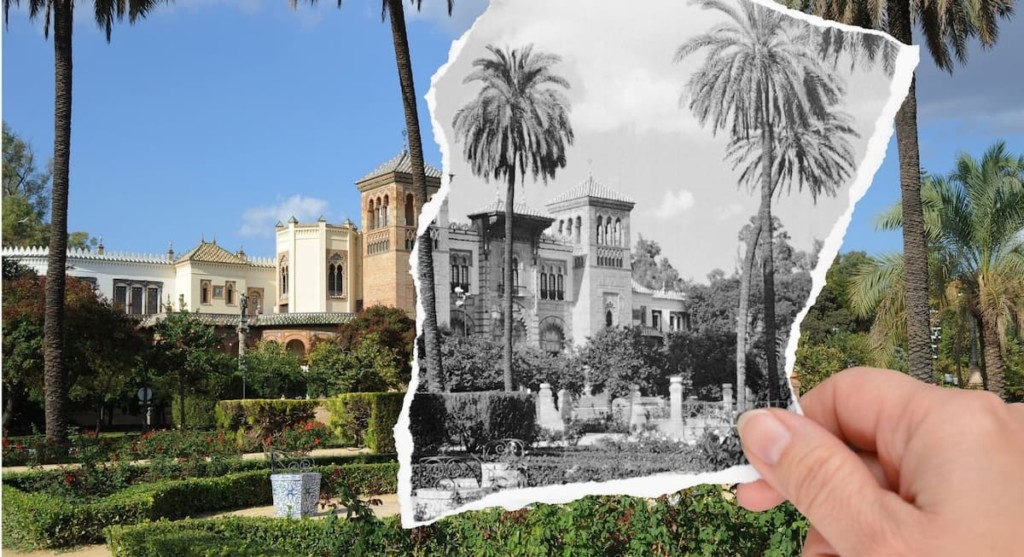
It was thus that Lecolant dedicated himself to designing a garden that followed the style of English landscapings, although incorporating details that came from oriental gardening. The artist who created this garden, which later became part of the María Luisa Park, also included archaeological remains belonging to the dukes and details of the French composition, which he knew very well .
Prior to the construction of the Park itself, the “Paseo de María Luisa” took place. This arises after the City Council requested permission to draw a street that would connect with the river and later the Park arrived. It should be borne in mind that although the donation by María Luisa was made in 1893, it was not until 1910 that the great works that are very popular in the Park today were carried out.
The Park begins to take its current form
Although at the first time after its donation some works were carried out in the Parque de María Luisa, such as the construction of the Costurero de la Reina in 1893 and the metallic structure greenhouse, it was not until 1910 that the most important works began to be thought of.
In 1929 Seville hosted the Ibero-American Exposition and the María Luisa Park, with her name honoring the woman who made such a generous donation, was included in the venue where the event would take place. The organization of the same began in 1909 and in 1911 they began with the papers to modify the park and prepare it to be at the height of said event.
The people in charge of the reform of the Parque de María Luisa were Aníbal González, who was the director of architecture for the exhibition in general, and Jean-Claude Nicolas Forestier, a landscaper Frenchman who was in charge of all the gardening works specifically. What the French did was take the work that Lecolant had done and make modifications at different points to turn it into a completely modern space.
Respecting the María Luisa promenade as a fundamental axis, adding the lotus pond at one of its ends and the Lions fountain. Forestier also took care of articulating the entire space of the Park with the incorporation of two parallel avenues, which were later called Avenida de Pizarro and Avenida de Hernán Cortés. The first one has a walk through sophora and the second one has a vegetable vault whose main protagonists are the plane trees.
Another key element was the Avenida de Rodríguez Casso, which was initially going to connect the Parque de María Luisa with the Prado de San Sebastián, but eventually ended up being an excellent access to the incredible Plaza de España.
Apertura del Parque de María Luisa al público
La apertura oficial del Parque de María Luisa al público fue el 18 de Abril de 1914, convirtiéndose en el parque de la ciudad y conservando ese título por un largo tiempo, hasta que se inauguró el Parque de Los Príncipes.
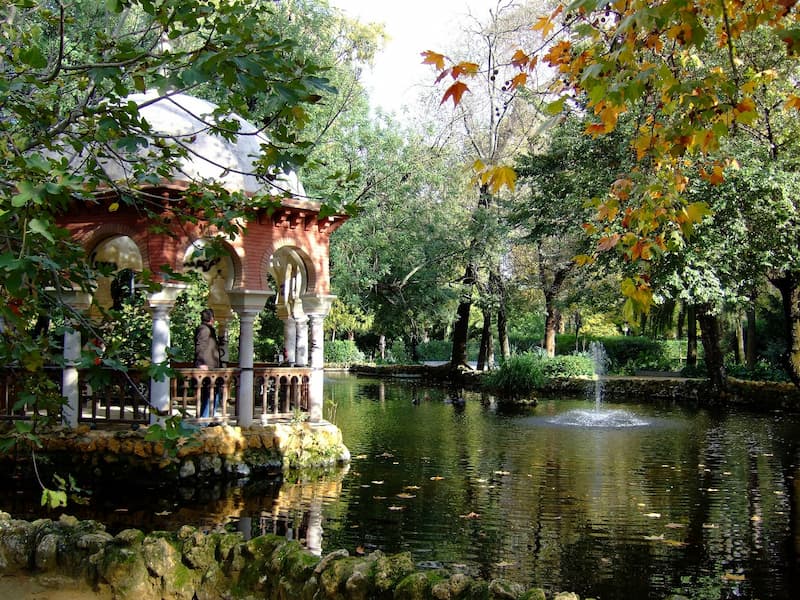
The modifications that were made to the park for the Ibero-American Exposition in Seville also included the incorporation of the Plaza de España and the Plaza de América, which became key elements of both the park in particular like the city in general. In addition, several roundabouts were also added that became the basic element of the María Luisa Park.
It is worth noting that although the origin and construction of this park had great influences from other places, it is undeniably a characteristic work of Seville. The details of the local influence are evident in the use of traditional elements such as ceramics and brick, contributing to the importance that this place has today.
The construction of new spaces, roundabouts and monuments in the Parque de María Luisa did not stop over time. In fact,between 1931 and 1972 more roundabouts and monuments were added, and in 1956 there was a renewal of the vegetation but maintaining exactly the same species.
Highlights of the María Luisa Park
María Luisa Park houses incredible spaces and monuments on its surface that extends over 34 hectares, which were gradually incorporated to form this park as it is known today. Here are some of them.
The modifications that were made to the park for the Ibero-American Exposition in Seville also included the incorporation of the Plaza de España and the Plaza de América, which became key elements of both the park in particular like the city in general. In addition, several roundabouts were also added that became the basic element of the María Luisa Park.
It is worth noting that although the origin and construction of this park had great influences from other places, it is undeniably a characteristic work of Seville. The details of the local influence are evident in the use of traditional elements such as ceramics and brick, contributing to the importance that this place has today.
The construction of new spaces, roundabouts and monuments in the Parque de María Luisa did not stop over time. In fact,between 1931 and 1972 more roundabouts and monuments were added, and in 1956 there was a renewal of the vegetation but maintaining exactly the same species.
Highlights of the María Luisa Park
America Square
The Plaza de América, in the María Luisa Park,is guarded on one side by the Museum of Popular Arts and Customs and by the Archaeological Museum on the other. Its construction was in charge of the architect Aníbal González, who began the construction in 1913 and it was finished in 1916. This plaza had the purpose of being finished in time for the Ibero-American Exposition and it succeeded.
It should be noted that both museums, as well as the Royal Pavilion, are part of what the square is. In addition, inside there is also one of its outstanding roundabouts, such as that of Miguel Cervantes , which was adorned with details reminiscent of his work, but it is not the only one.
The Plaza de España has several prominent roundabouts, including Cervantes, Rodríguez Marín, the Clock and the Mural Table, to name a few.
María Luisa Park houses incredible spaces and monuments on its surface that extends over 34 hectares, which were gradually incorporated to form this park as it is known today. Here are some of them.
Square of Spain
The Plaza de España is one of the most outstanding sites in the park, in the city of Seville, and has also been chosen as one of the most spectacular monuments in all of Europe by the people who have visited it. It was built to be presented at the Ibero-American Exposition of 1929 and since then it has done nothing but amaze all the people who know it.
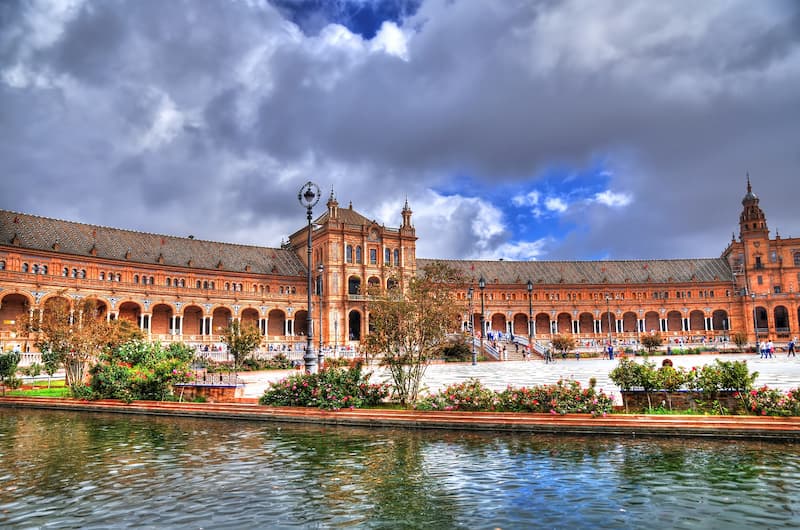
This square has a surface area of 50,000 square meters, being one of the most impressive squares in the entire country. In addition, it is characterized by being surrounded by a canal that exceeds 500 meters in length and through which you can walk. The Plaza de España is one of the most outstanding places in Spain, so much so that it has even been a key setting for more than one big name movie.
Lotus Pond
The Lotus Pond has a rectangular shape and has a marble fountain right in the center. Its name is due to the flowers found in the pond and that can float on the water. In addition, it is surrounded by pergolas that have different types of vines and climbing plants, such as ivy, Cape jasmine, vines, solandras, among others.
It should be borne in mind that this pond in the Parque de María Luisa was already part of what was originally a garden, although it took on its current appearance after the reforms carried out by Forestier. In the surroundings From the Lotus Pond you can find an oriental banana and Chinese parasols, as well as cóculos and various groups of celinda.
In 2002 and 2003, a restoration process was carried out in the Park, through which the pergolas and the tiles of the pond were renewed.
Monument to Bécquer
This monument in the Parque de María Luisa is one of the most important, it is dedicated to the poet and is made up of the bust of the writer and three female figures that are inspired by his work. It is a monument made of white marble that surrounds a large swamp cypress tree. The roundabout in which the monument is located is one of the most popular in the entire park and has been declared a “Asset of Cultural Interest”.
The project for this monument was presented in the year 1910by the Álvarez Quintero brothers and was carried out with the support of the sculptor Lorenzo Coullaut Valera. The inauguration of the same took place on December 9, 1911. It could be said that it is a “living monument”, since the tree that is part of it is in constant change and growth, and with this it was sought to represent that the work intended to be eternal, just like Bécquer and his art.
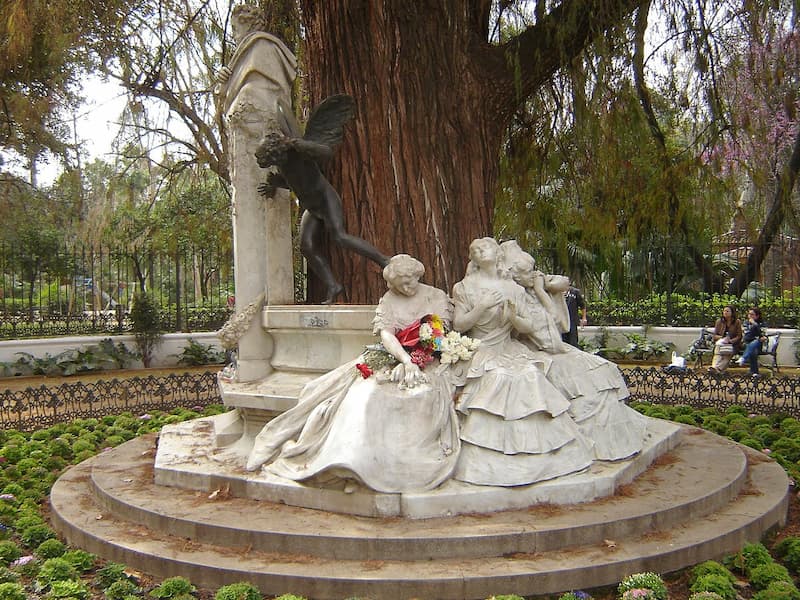
This monument underwent several restorations, the last being in 2016 with the aim of adapting the monument to the size of the tree, which had grown wider.
Garden of the Lions
The Garden of the Lions, also known as the Fountain of the Lions, is the largest in all of María Luisa Park and, in the same way, the one that attracts the most attention. It consists in a polygonal shape and is crossed by two corridors that divide this space into four ponds. Of course it has some lions, which are the ones who give the name to this sector, and were originally made by Manuel Delgado Brackembury, later replaced by some made by Juan Abascal.
This space has been part of the María Luisa Park since 1928 and is among the additions that Forestier designed for the Ibero-American Exposition of 1929 in Seville. The lions that star in this sector there are six of them and they are holding shields, and their replacement was carried out in 1957 taking into account that the originals were very deteriorated.
Museum of Popular Arts and Customs
The Museum of Popular Arts and Customs of Seville is located in the Plaza de América, in the Parque de María Luisa. During the Ibero-American Exposition of 1929, this space was the Ancient Art pavilion. Currently the museum has temporary and permanent collections, and it is worth bearing in mind that one of those that has been presented as temporary, the Díaz Velázquez collection, in 1994 became permanent, which has almost 6,000 pieces.
Some of the collections that have formed part of this museum are the Aguiar Collection of costumbrista painting, the Soria Collection of fine earthenware and oriental ivories, and the Orleans Collection, to name a few. It is worth noting that initially, in order to present the different collections, the institution had the collaboration of the Museum of Fine Arts of Seville, the Archaeological Museum of Seville, the Museum of the Spanish People and the Museum of Fine Arts of Valencia.
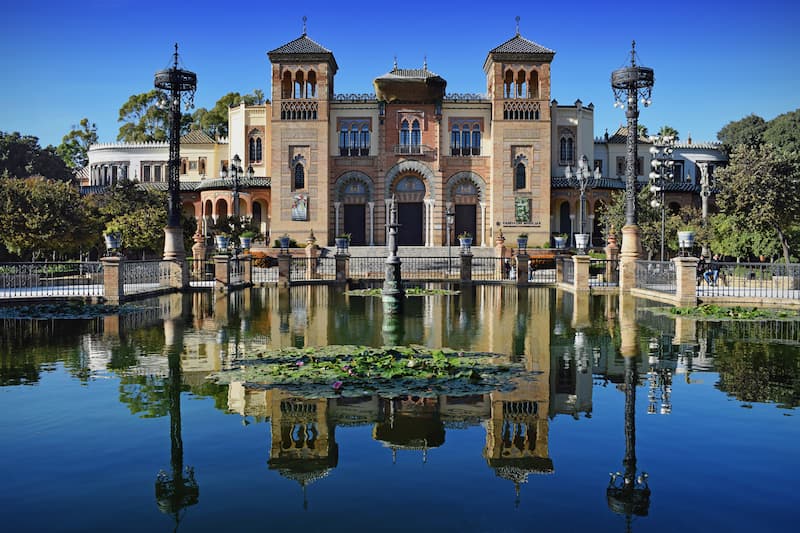
This museum in Parque de María Luisa has an area of 5,496 square meters that is destined for the exhibition. It has three rooms on the ground floor, intended for temporary and permanent exhibitions, and twelve rooms on the semi-basement floor, which is divided into three large thematic areas.
Archaeological Museum
The Archaeological Museum of Seville is part of the Plaza de América, inside the María Luisa Park, right in front of the Museum of Popular Arts and Customs. It is a space that during the Ibero-American Exposition of 1929 in Seville was used as the old Fine Arts pavilion.
Its construction took place between 1912 and 1919 and at first it had been baptized “Renaissance Palace”. Its construction made it the most expensive building in the entire Plaza de América. It was only in 1942, thirty years after construction began, that the archaeological collections were moved there.
This museum in the Parque de María Luisa is one of the most important in Spain, and among the most outstanding pieces are the remains dating from the Roman and Hispano-Roman times, as well as some pieces dating from pre-Roman times. The building has three floors that are divided into several rooms, and they contain objects dating from prehistory to the Middle Ages.
roundabouts
The roundabouts of the María Luisa Park are one of its most characteristic elements, either because of the decoration they have, because of the name they bear or the ponds or monuments that are located there. Below we name some of the most outstanding.
- Bécquer Roundabout
- Dante Alighieri Roundabout
- Blue Roundabout
- La Concha Roundabout
- Doña Sol Roundabout
- Ofelia Nieto Roundabout
- Glorieta de la Mesa Mural
- Glorieta de Cervantes
Visit the Maria Luisa Park
María Luisa Park is one of the jewels of Seville and without a doubt it is one of the most beautiful urban parks that you can visit. From being a private garden of the Palacio de San Telmo to housing some of the most important squares in the country and the most beautiful in the world, such as Plaza España, this place became one of the green lungs of the city.
With the different modifications that it went through, some elements are preserved as they were in its beginnings, or at most they underwent some other restoration. Without a doubt, touring the park is a walk worth doing. In addition, it should be noted that you can visit it for free, knowing its spaces and its history.
Regarding opening hours, María Luisa Park is open to the public from 8 a.m. to 10 p.m., during the winter months, and from 8 a.m. to midnight, in summer. An unmissable visit if you pass through Seville.
